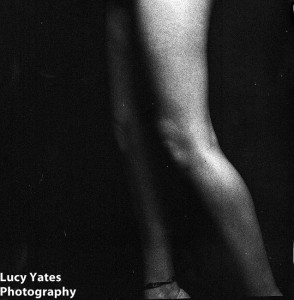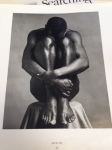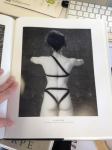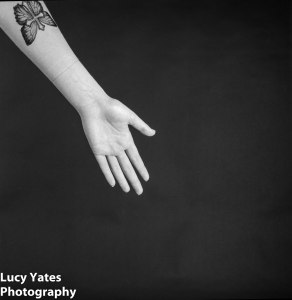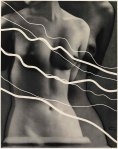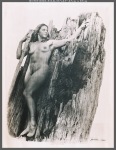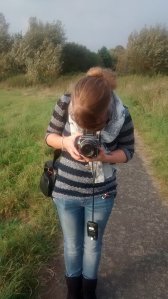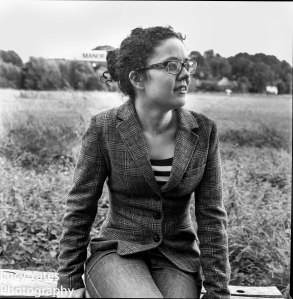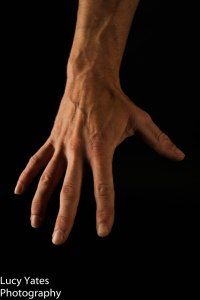This photo-shoot, I went into the studio feeling pretty confident!
After having two practice shoots, I felt that I was ready and feeling rather excited to be working with not only a different model but also one of my classmates. Unfortunately, my model scheduled so thankfully my friend kindly stepped in (and I owe her a Starbucks coffee too!).
I had the studio set up ready for when my model walked in, we discussed what underwear we thought would be best and got the camera settings correct on my DSLR and then moved straight onto my Hassleblad… WITHOUT CHANGING THE SETTINGS!! *Bangs head repeatedly on table*.
This was a big photographer doo-doo and after developing the film I couldn’t believe what I had done.
Luckily, the images came out OKish, however my film looked very thin and disappointing – I went ahead and scanned the images in and with doing a slight boost on the scanning software I was able to recover parts of the images.
See below!
I had to do a lot of post production on these images – boosting the levels and contrast and having play about with the tonal range of the images to to bring back some of the detail. The images came out quite gritty-looking which I find works really well.
There is something about these images that makes the subject look quite vulnerable just wearing her underwear – the way people gaze at women nude and a lady in just lingerie can be seen in two different ways. Seeing a nude lady makes us think about the natural beauty of a woman – the skin tones, the curves of the body and there is something aesthetically pleasing that makes us want to value women in art and photography – after all, women in art posed in this manner has always been popular genre. But seeing a lady in just her underwear changes the gaze completely – something like this can be seen in a more sexual manner, just revealing parts of her body to the viewer makes her seem like she’s teasing and posing in certain positions makes her look more appealing.
I am disappointed that I made such a big mistake for this photo-shoot, HOWEVER, I have decided to take this shoot as a happy accident! The film came out thin and rather under-exposed but I can work with this to help my photographs become a part of the Fragmented Body as part of this project I am doing at university.
These photographs are cropped to a certain manner so I can focus on specific parts of the female body and therefore develop my technical skills to ‘fragment’ this further. There are a number of things that I can do with this film – I can leave it as it is and head straight into the Darkroom and see what results I can achieve from doing a straight print.
I can also manipulate the films further – bury it, burn it, place it into bleach and see what weird effects I achieve. I plan on talking to tutor and technicians to see who I can look at for references as part of my research (I am keeping a Research Development Book (RDB) ). If you have any names then please don’t hesitate to contact me!
Let’s see what I can achieve!

